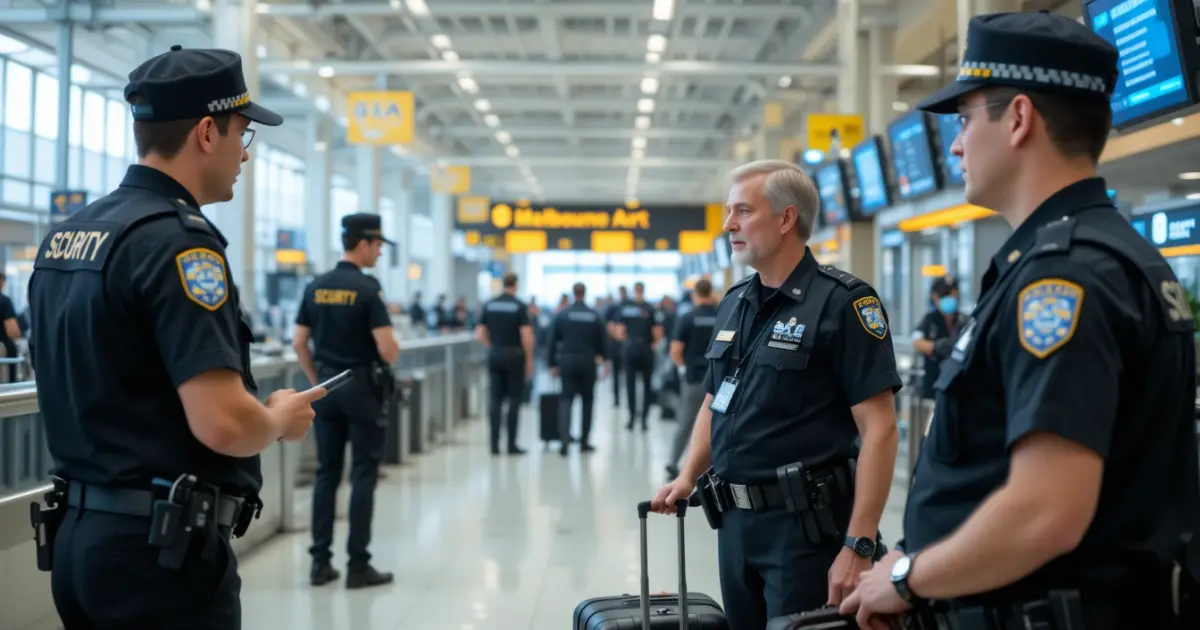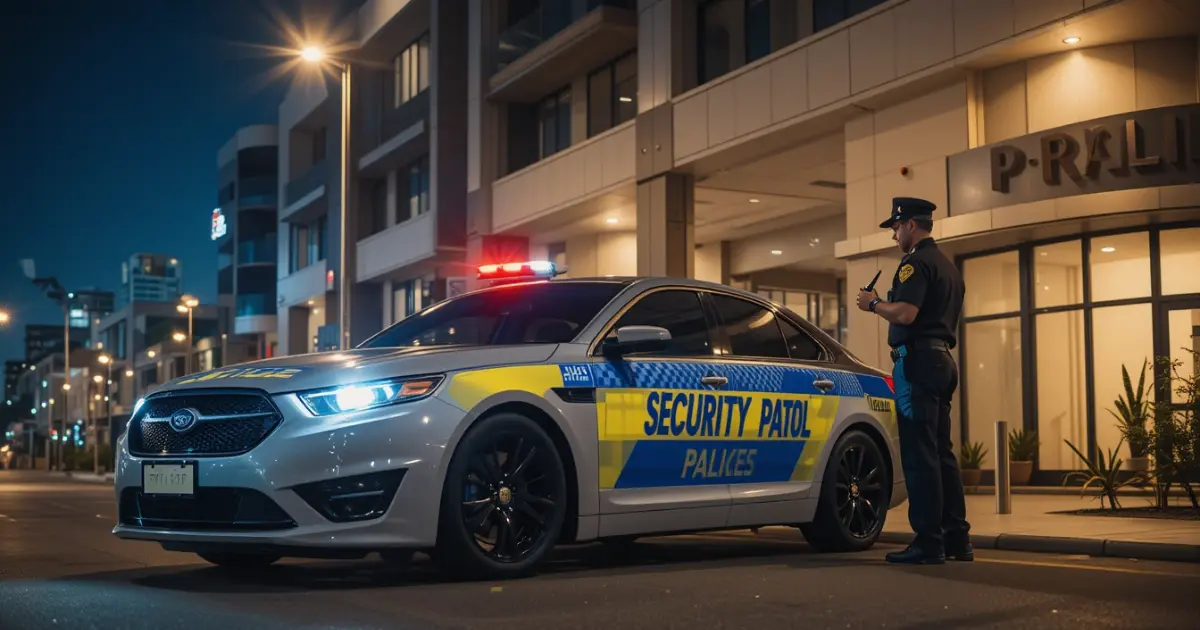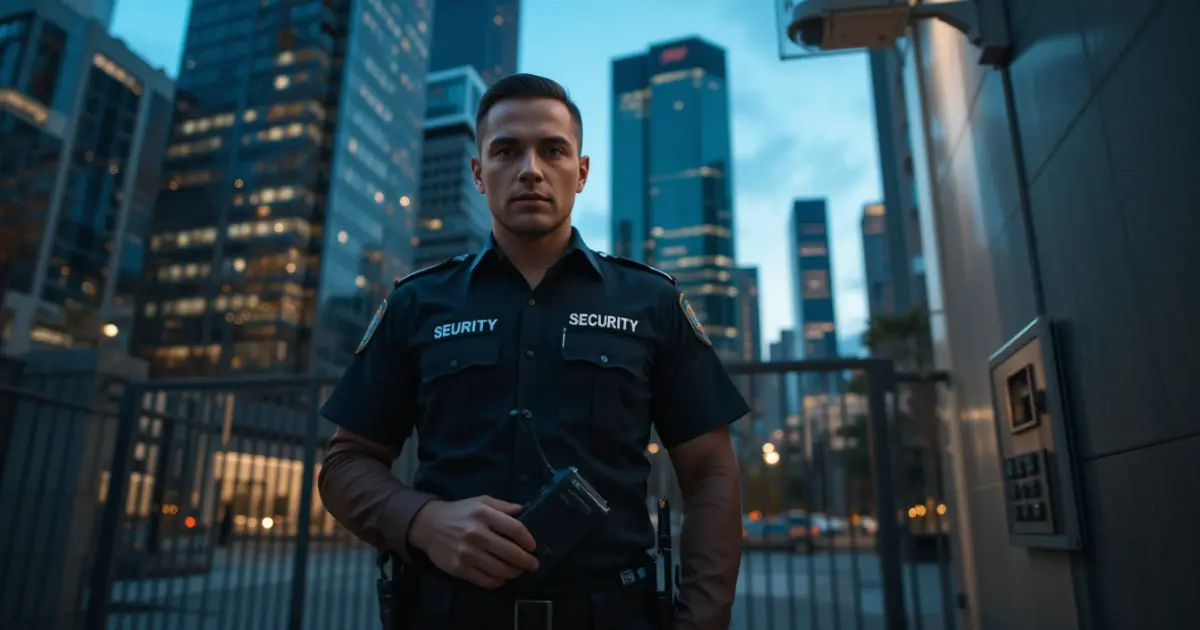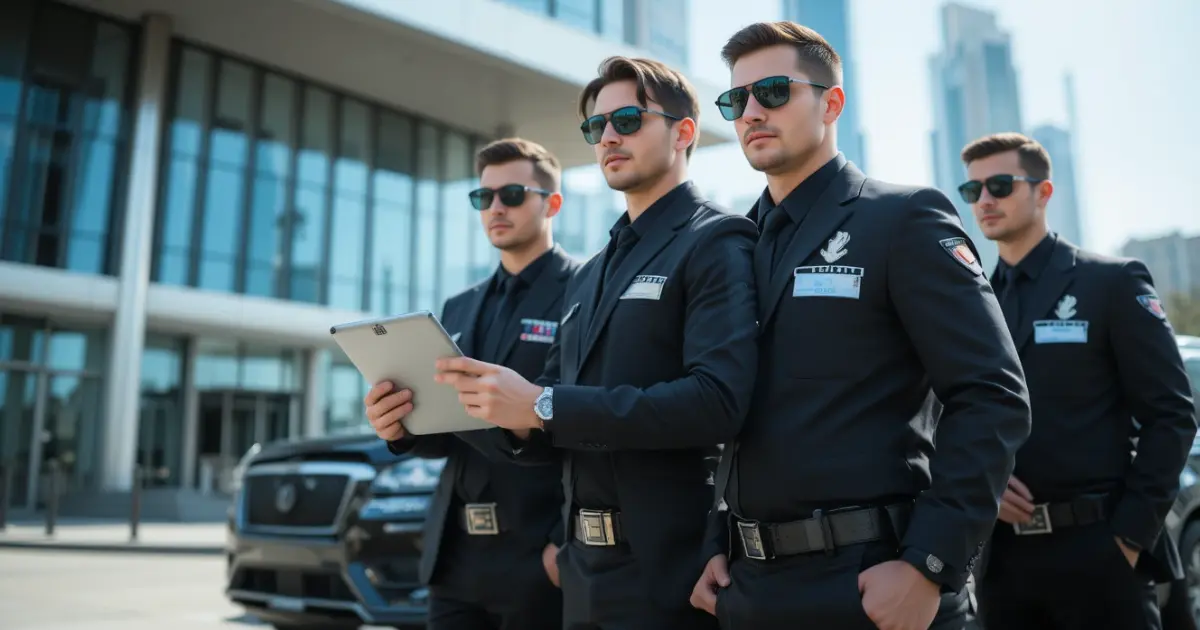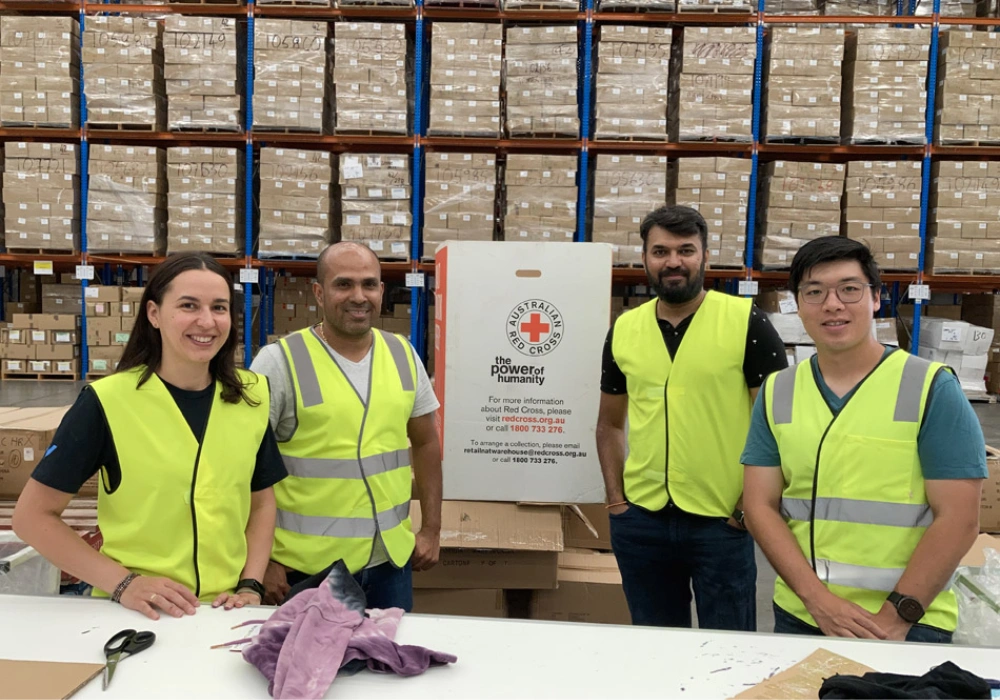Airports are busy places where many people come and go every day. Because of this, safety is very important. At Melbourne Airport, more and more travelers are arriving, and this has made security even more needed.
In the past, simple checks were enough. Now, new dangers have been found, and better ways to keep people safe must be used. This is why security services at Melbourne Airport are being upgraded all the time.
For example, in 2024 alone, Melbourne Airport welcomed over 35 million passengers. This number keeps growing every year, and with more people comes more risk. Security teams must work harder to check bags, scan bodies, and protect digital systems from hackers.
If you want to learn more about how security jobs help, read about Melbourne Airport security jobs.
1. What Does Melbourne Airport’s Current Security Landscape Look Like?
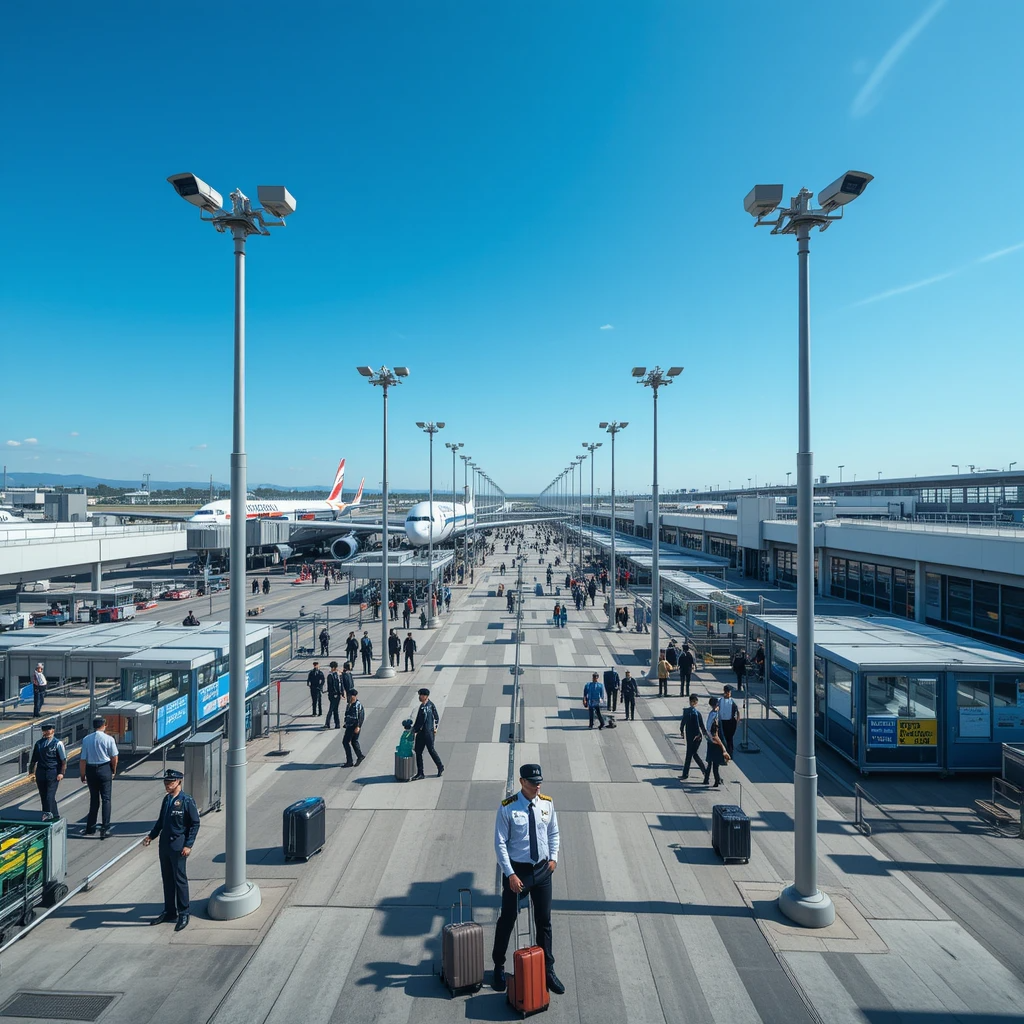
Melbourne Airport uses many tools and workers to stay safe. Big machines like X-ray scanners are used to check bags. People called security guards are also trained to watch for anything strange.
The airport works with groups like the Australian Federal Police and other experts to make sure everything is done right. All of these steps are taken to protect travelers, staff, and the airport itself.
Who Are the Key Agencies Responsible for Airport Safety?
Security at Melbourne Airport is not handled by one group alone. Multiple agencies work together, including:
- Australian Federal Police (AFP): They handle major crimes and emergencies.
- Australian Border Force: They check passports and stop illegal items.
- Private Security Companies: These companies hire guards and tech experts to run daily checks.
This teamwork helps make sure no threat is missed. If you’re curious about how private security works, check out private security services in Melbourne.
2. Why Are Security Services in High Demand at Melbourne Airport?

Why Are Rising Passenger Numbers Increasing Security Needs?
More people flying means more bags to check and more things that could go wrong. In 2024, millions of travelers passed through Melbourne Airport. Everyone of them needs to be kept safe, and this takes more workers and better tools.
For example, during peak hours, over 10,000 passengers pass through the airport every hour. This creates long lines and pressure on security teams. To fix this, smart screening points have been added to speed up checks without lowering safety.
3. What Cyber Threats Is Melbourne Airport Facing Today?
Airports now use computers for many tasks, like checking in and tracking flights. Hackers try to break into these systems. To stop this, Melbourne Airport uses special software like Cloudflare and Trustwave to lock down digital systems.
For instance, in 2023, the airport faced over 500 cyberattacks. Tools like Trustwave found weak spots in the system, and Cloudflare blocked fake traffic that could crash websites. These steps stopped hackers before they could cause harm.
4. How Do New Screening Technologies Improve Security?
Old ways of checking people and bags are being replaced. For example, CT X-ray scanners can see inside bags in 3D, making it easier to find dangerous items. Smart-security screening points also help move people faster while staying safe.
These machines can scan up to 180 bags per hour, which is twice as fast as older scanners. They also use AI to spot items like knives or explosives automatically.
5. Why Must Airports Comply With National and International Standards?
Rules are made by groups like the Australian Government and global agencies. If airports don’t follow these rules, they can’t work with other countries. This is why Melbourne Airport always makes sure it meets these standards.
For example, the International Air Transport Association (IATA) sets rules for how airports should screen passengers. Melbourne Airport follows these rules to keep flights running smoothly with other nations.
6. How Is Technology Improving Security at Melbourne Airport?
How Do Smart-Security Screening Points Enhance Passenger Screening?
These new screening points use machines that can scan many bags at once. This helps reduce waiting times and makes sure nothing dangerous gets through.
For example, passengers can now place their bags directly onto moving trays without removing laptops or liquids. The machine checks everything in seconds, and security staff only stop bags that need extra checks.
7. How Do CT X-Ray Scanners Help Detect Dangerous Items?
CT scanners take clear pictures of what’s inside bags. If something bad is found, it can be removed before it becomes a problem.
These scanners use 3D imaging to rotate bags on-screen, letting security staff zoom in and rotate images for a better view. They can even spot materials that look like explosives.
8. How Do Cloudflare and Trustwave Strengthen Cybersecurity at the Airport?
Cloudflare protects websites from attacks. Trustwave finds and fixes weak spots in computer systems. Together, they help keep Melbourne Airport’s digital tools safe from hackers.
For example, Cloudflare blocks fake traffic that could crash the airport’s booking system. Trustwave scans servers for viruses and fixes bugs before they become risks.
9. How Does Melbourne Airport Compare to Other Airports in Terms of Security?
Many airports in Australia, like Sydney and Brisbane, also use good security. However, Melbourne Airport is known for trying new tech faster. For example, smart screening and better cyber tools are used here before other places.
How Does Melbourne Airport’s Security Compare to Other Australian Airports?
Sydney Airport uses similar tools but has fewer smart screening points. Brisbane Airport has strong cybersecurity, but hasn’t adopted AI-powered bag scanners yet. Melbourne leads in combining both physical and digital security.
What Unique Features Make Melbourne’s Security Stand Out?
Melbourne Airport has:
- AI-Powered Bag Scanners: These find threats faster than humans.
- 24/7 Cyber Monitoring: Experts watch for hacks at all times.
- Passenger Feedback Systems: Travelers can report issues quickly.
To see how other cities handle security, check out Adelaide security services or Brisbane access control systems.
10. What Does the Future Hold for Airport Security Trends?
In the future, robots and AI might be used to find risks even faster. Facial recognition could also make checking in easier. Melbourne Airport is always looking for ways to stay ahead of new dangers.
How Can Melbourne Airport Future-Proof Its Security Strategies?
By:
- Investing in AI for threat detection.
- Training staff for new tech.
- Upgrading tools every few years.
What Emerging Security Technologies Should We Watch For?
- Facial Recognition Gates: These let passengers board without showing a ticket.
- Drone Surveillance: Drones could watch the airport’s perimeter.
- Biometric Scanning: Fingerprints or eye scans could replace passwords.
If you’re interested in how access control helps businesses, read about Melbourne access control systems.
11. Final Thoughts
Melbourne Airport is working hard to keep everyone safe. With new tech, trained workers, and strong rules, it stays ready for any threat. For more security tips, visit Security Near Me.
12. Frequently Asked Questions (FAQs)
Big machines like X-ray scanners, trained guards, and digital protections like Cloudflare are used.
Tools like Trustwave and Cloudflare are used to guard digital systems.
Yes, smart screening points are used to make security faster and better.
Security is handled by trained guards and groups like the Australian Federal Police.
New tech like CT scanners and smart screening points has made checks quicker and safer.
It is one of the top airports for security, thanks to its use of new tools and methods.

